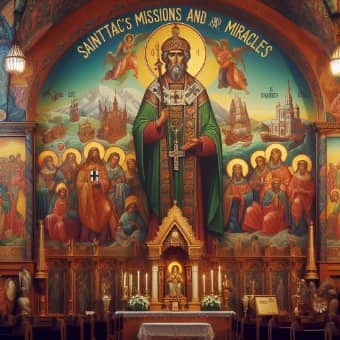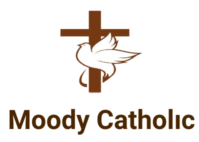Saint Didacus
His Spiritual Journey and San Diego Legacy
Have you ever heard the name Saint Didacus? This saint’s story, although not as famous as others, carries a unique blend of humility and miracle. Imagine stepping into the dusty streets of 15th-century Spain, where young Didacus first felt his spiritual calling.
He was no ordinary man; he exchanged worldly comfort for religious devotion in the Franciscan Order. And that was just the beginning! With him at center stage, we’ll journey from humble beginnings to miraculous healings during Rome’s brutal epidemic.
Ever wonder how a simple friar like Didacus earned sainthood? Or perhaps you’re curious about his enduring legacy within Catholicism today? As we unravel these threads together, I promise you an enlightening exploration into Saint Didacus’ life and works!
Get ready, everyone! As you continue reading, you’re about to dive deeper.
The Early Life and Spiritual Journey of Saint Didacus
Born around 1400 in the humble town of San Nicolas del Puerto, Andalusia, Saint Didacus’ life journey began as a simple shepherd boy. However, his heart was always drawn to a higher calling.
This blog post contains affiliate links. When you click on a link on this page and make a purchase I may earn a small commission, at no additional cost to you. Thank you for your support.
Saint Didacus’ Calling to Religious Life
His ascetic lifestyle included strict adherence to poverty and silence, which earned him respect among peers and superiors alike. The New Advent Catholic Encyclopedia says that even during this period he showed an unusual gift for dealing with sick people.
A fascinating episode from those days is when he spent time in a hermitage under the guidance of an older friar who lived strictly according to the rules laid down by St. Francis himself. But don’t think it was all serious; tales tell us about their shared love for animals, especially birds, which they fed together.
This connection with nature made him feel closer not just to God but also to fellow humans who needed help – something very much akin to the third order’s principles of service to humanity through deeds of kindness, compassion, humility, peace, justice, faithfulness, joy, self-control, gentleness, goodness, love – virtues cherished and revered today by millions worldwide following in the footsteps of St. Francis.
San Nicolas del Puerto became a beacon of light for them, guiding them towards the path of righteousness, divinity, fulfillment, and happiness in the hereafter.
People started recognizing his saintly nature, and with that came more duties. Before long, he became the guardian of the Franciscan convent at Arizafa. He took on this role humbly and worked hard. His days were filled with prayer, deep thought, looking after his brother friars, and handling paperwork.
Saint Didacus’ Missions and Miracles
Among the notable saints in Catholic history, Saint Didacus holds a special place. His life was filled with selfless service and miraculous deeds that demonstrated his deep faith.

Missionary Work in Canary Islands
The Canary Islands mission was a turning point for Saint Didacus. It wasn’t an easy task to spread Christianity among non-believers. But he faced this challenge head-on, driven by his unwavering faith.
Born around 1400 in San Nicolas, Andalusia, Saint Didacus volunteered for missions to the Canary Islands out of a strong desire to help others find God’s love. This is where he spent many years serving as part of the Third Order of St. Francis.
Dedicating himself fully to spreading God’s word, he played a crucial role in enlightening many souls about Christ’s teachings during these missionary endeavors.
Miraculous Healings During Rome Epidemic
Another significant chapter from Saint Didacus’ life unfolded during an epidemic that swept through Rome later on.
In those dark times when despair hung heavy over Rome like an ominous cloud, it was said that miracles started happening at the Franciscan convent where Brother Diego (as known locally) served tirelessly caring for sick friars who were affected by the plague.
Accounts reveal how countless lives regained their health due to his prayers and care. Saint Didacus, through his supernatural insight into God’s ways, became a beacon of hope for many who had lost faith.
His devotion to St. Bernardine of Siena was profound too. He even attended the canonization ceremonies of St. Bernardine, displaying his respect and admiration for fellow saints in the Church.
Saint Didacus’ life is an extraordinary testament to selfless service and unwavering faith. His miraculous healings during Rome’s epidemic still inspire Catholics worldwide about how deep faith can move mountains.
The Legacy Lives On
Saint Didacus’ legacy didn’t stop with him but continued on long after he left this world in 1463.
The Canonization and Legacy of Saint Didacus
Taking us back to the late 16th century, Pope Sixtus V was determined to canonize Brother Diego as Saint Didacus. Pope Sixtus V was on a mission, an important one at that – canonizing Brother Diego as Saint Didacus.
The Canonization of Brother Diego
Sixtus V’s papacy is known for its sweeping reforms and building projects, but he also recognized holiness where it blossomed.
Born in San Nicolas del Puerto in Andalusia around 1400, Brother Diego lived his life serving others selflessly. He breathed his last on November 12, 1463. His deeds during his lifetime had left their mark though; whispers about the miracles attributed to him were making rounds all over Rome.
In light of this divine intervention through Brother Diego, after careful investigation and verification by Church authorities over centuries – more than two hundred years later – Pope Sixtus V made the decision that shook up Catholicism forever:
The canonization of Brother Diego as Saint Didacus took place in 1588. A recognition reserved only for those who led lives steeped in faith and virtue.
A Legacy Beyond Measure
The sainthood wasn’t just an end-point for Saint Didacus’ story—it marked a beginning too. With tales spun around miraculous healings during an epidemic while caring for sick friars or spreading Christianity among infidels during missions to Canary Islands under St Bernardine—his name started being revered far beyond Spain’s borders.
Name: Diego
Born: San Nicolas del Puerto, Andalusia (around 1400).
This influence reached even the New World. The city of San Diego in California was named after him by Spanish missionaries. His memory lives on today as his teachings and miracles continue to inspire people across continents.
Saint Didacus Parish and Community Worship
When you step into St. Didacus Catholic Church, you enter a space where every soul matters. The warm glow from the stained-glass windows isn’t merely light refracted through colored glass but symbolic of how this church shines hope on its parishioners.
In these hallowed halls echo hymns sung during Mass times at St. Didacus – melodic affirmations of shared belief and unity within diversity.
This communal connection deepens as we kneel together for confession – an act that humbles us before God while fostering empathy among parishioners.
We’ve laughed here during joyous occasions like baptisms or weddings, cried when bidding farewell to loved ones during funerals – making this sacred place an extension of our homes and hearts alike.
A Glimmering Beacon: Saint Didacus’ Legacy Lives On Through His Namesake Parish
“For where two or three gather in my name, there am I with them.” Matthew 18:20
The church is named after Saint Didacus, a humble friar known for his deep love of God and service to the needy. His legacy thrives here through acts of charity, kindness, and communal worship that are integral parts of this parish.
Saint Didacus’ Spiritual Imprint on the City
To understand the significance of Diego’s imprint, it is necessary to explore his origins. Did you know that ‘Diego’, as he was commonly known, means ‘teaching’? This isn’t by chance; it aligns perfectly with how deeply education has been woven into the fabric of St. Didacus’ legacy here.
Conclusion
So, we’ve journeyed together through the life of Saint Didacus, haven’t we? We discovered his early calling to religious devotion and how he dedicated himself to the Franciscan Order.
We learned about his selfless missions in Canary Islands, where he brought hope and faith. His miraculous healings during Rome’s epidemic revealed a man deeply connected with divine grace.
Through canonization, Saint Didacus became an enduring symbol within Catholicism. Today, churches like St. Didacus Parish serve as vibrant community worship centers thanks to him.
Who knew San Diego owed its name to this humble friar?
The journey of discovery doesn’t stop here; it continues every time you delve deeper into understanding your faith or heritage. Keep exploring!
